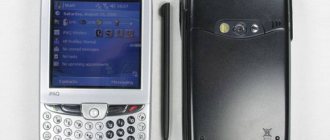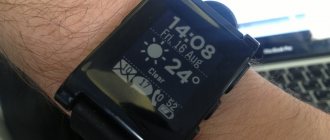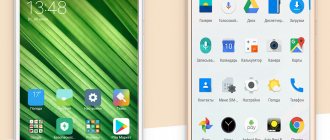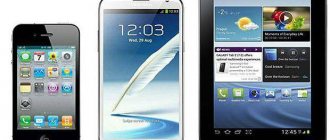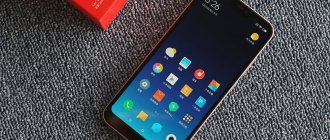Review of the Moto G4 Plus smartphone: transition to the middle class
The return of Motorola smartphones (more precisely, now Moto, it’s quite difficult to get rid of old habits) became known back in February of this year, but last year’s line hit store shelves only in April, and already in May the new current Moto G4, G4 Plus and G4 Play. There will be no such delays in the future and new models have already appeared on sale in Ukraine (except for the G4 Play, which will be available in August). In the meantime, the gg have received the most advanced in the line, Moto G4 Plus.
What is this?
Moto G4 Plus is a mid-price smartphone with a 5.5-inch IPS FullHD screen, a 64-bit octa-core Qualcomm Snapdragon 617 processor, 2 GB of RAM, 16 GB of internal expandable memory, dual SIM support, TurboCharge fast charging technology and a fingerprint scanner (a first for Moto).
What's included?
In addition to the presence of a fingerprint scanner and an improved camera, the Moto G4 Plus differs from the “standard” Moto G4 in the package included: both smartphones support TurboCharge fast charging, but the corresponding charger is only included with the Moto G4 Plus. The rest of the kit is absolutely familiar: a small white and blue box with a picture of a smartphone, which (in addition to the smartphone itself) contains a charger, a MicroUSB cable and a set of instructions in different languages:
What does the Moto G4 Plus look like?
The entire new line is not much similar to the Moto G 2020 (although some things remain in common, more on that below). There are no exotic or designer delights; after all, this is not a flagship. What catches your eye is the unusual square fingerprint scanner under the screen and the lonely hole next to it where the microphone is located. Otherwise, the front panel looks familiar: a large screen, a sheet of 3rd generation Gorilla Glass and the necessary set above the screen.
The fingerprint scanner is inscribed in a small square with a side of about 7 mm with a frame around the perimeter (most likely painted plastic). Friends who held a smartphone in their hands (and me on the first day of use) kept wanting to press the scanner, but in fact it is not a button. There are no touch buttons on the sides, only on-screen ones. Symmetrically to the microphone there is an LED indicator that flashes only when the charger is turned on. Perhaps in future firmware it will become more functional:
Above the screen there is a 5 megapixel front camera, a set of sensors, and earpiece and external speakers:
The frame of the smartphone is made entirely of metal. The only thing that resembles previous models is the rounded profile of the top edge. There is a 3.5 mm headphone/headphone jack on it:
Hardware buttons are located on the right side. They are thin, made of metal, the power button has nice notches. They are comfortable and have a good, clear movement, but they wobble a little in the slots:
The left end is pristinely empty:
The entire back cover is made of textured plastic. It's certainly not Kevlar, nylon or metal, but it feels good in the hand and doesn't feel cheap from China. At the top of the rear panel there is a vertical camera module with dual LED flash and laser autofocus. A little to the left is the microphone hole, below is the Moto logo in a small recess:
At the bottom end there is a MicroUSB connector and a recess for convenient removal of the back cover:
Under the back cover there are slots for cards and a battery. Despite the removable cover, the battery was made non-removable:
The Moto G4 Plus decided not to use a compromise solution in the form of a hybrid tray for 2xSIM or a SIM card and MicroSD at the bottom. All three slots are separated. Plus, the manufacturer has made a very simple but useful thing: the trays are designed for MicroSIM, but the kit includes two adapters for nano. So there is no need to run around buying adapters:
Yes, the smartphone does not look as impressive as the more expensive Moto models, but it is very well made from high-quality materials and fits comfortably in the hand, although it is slightly inferior in this regard to the more expensive Moto X Style and X Force with a convex back. It is worth understanding that this is not a flagship, but a middling one. In overseas countries, interchangeable multi-colored back panels will be available. Whether they will reach us is still difficult to judge. A frankly controversial point is the rather large “chin” of the smartphone and the slightly protruding finger scanner.
How good is the screen?
The Moto G4 Plus has a 5.5-inch screen with a resolution of 1920x1080: a fairly standard and optimal solution for such a diagonal. An IPS matrix with a pixel density of 401 ppi is used, the screen is protected by Gorilla Glass 3 with a good quality oleophobic coating. Just a couple of years ago, 5.5-inch smartphones were considered huge. Everything is changing and now this is already a standard, which is partly dictated by Chinese users who are fans of large screens.
The screen itself makes a very good impression. The picture is very lively and rich. Of course, there is no air gap and the viewing angles are maximum, while the picture does not fade, and the colors are not distorted even at maximum angles:
The screen has a good maximum brightness and the information is readable in the bright summer sun:
Lately, it seems that screens of frankly poor quality with support for less than 10 touches are installed only in the cheapest smartphones. In any case, it's worth checking:
For those who want to know more
The smartphone comes pre-installed with a utility with two screen modes: normal (with more realistic colors) and bright (with a brighter and more saturated color display). I used the latter, since in normal mode the maximum brightness is slightly lower:
Measurements using a colorimeter showed the following: maximum brightness is 409.609 cd/m2, black field brightness is 0.38 cd/m2, and contrast is 1078:1, very good indicators. Even in the “bright” mode, the calibration turned out to be very good. Of course, there is some oversaturation of blue, which is usual for such screens, but within reasonable limits. Color temperature for the most part does not exceed 8000K. Color gamut less than sRGB (in red and green):
Comparison with competitors:
| Device name | White field brightness, cd/m2 | Black field brightness, cd/m2 | Contrast |
| Moto G4 Plus | 409.609 | 0.38 | 1078:1 |
| Moto X Force | 336.777 | 0 | ∞ |
| Meizu M3 Note | 344.943 | 0.601 | 574:1 |
| Samsung Galaxy Note 4 | 345.91 | 0 | ∞ |
| Xiaomi Mi5 | 517.946 | 0.392 | 1321:1 |
How's the performance going?
The hardware of the smartphone is by no means top-notch: not the latest eight-core Qualcomm Snapdragon 617 with Cortex-A53 cores up to 1.5 GHz, 2 GB of RAM and 16 built-in (expandable). There is a 3/32 GB option, but it is not available with us yet. In fact, if used for everyday tasks, then this filling is quite enough: the interface and applications work quickly, without any lags. It's more difficult with games. In the most demanding ones, the FPS drops a little (although it is quite playable and not critical), so if the smartphone is not used primarily for games, then there will be no questions. It heats up only in the heaviest games, but heating is minimal:
The smartphone has dual-band Wi-Fi 802.11 a/b/g/n 2.4 GHz + 5 GHz (without ac), Bluetooth version 4.1 LE, there is an FM radio (I sincerely don’t understand why, but, as I understand from the comments in some reviews, there are people who still listen to it). Of course, there is an auto search, selection of favorite stations and the ability to record from the air:
NFC and IR blaster are missing. The GPS module works quickly. On the street he finds the first 8-10 satellites almost instantly:
The smartphone has a 3000 mAh non-removable battery. There are smartphones with similar characteristics with significantly larger batteries; in fact, everything is much better than one might expect. In my usual mode (about 20-30 minutes of calls, 10 SMS, an hour and a half of web surfing, half an hour of games, almost constant connection to the network and synchronization), the smartphone lasts for a day and a half without any problems. If you don’t play and turn off the Internet from time to time, then it’s quite possible to get 2 days. The kit comes with a fast charger, which actually charges 25% in 15 minutes, and you can get a full charge in about 1.5 hours, which is very good.
The external speaker is located rather unusually: next to the speaker. It is quite loud, and the quality is average. In most cases, the volume reserve is sufficient. The same goes for the headphone output. The quality is quite acceptable. The average user will be pleased.
For those who want to know more
The smartphone has a 64-bit Qualcomm Snapdragon 617 with two blocks of 4xARM Cortex A53 cores at 1.5 GHz and 4xARM Cortex A53 at 1.2 GHz, an Andreno 405 graphics processor up to 550 MHz and 2 GB of RAM. As one would expect, in synthetic tests the smartphone shows results slightly below average (at the moment), although this is enough for comfortable work. Benchmark results:
What about the software and additional features?
Unlike Lenovo smartphones with their own Vibe UI shell, Moto smartphones use an almost pure OS, in this case Android 6.0.1 Marshmallow with minimal additions, so there are no glitches, everything flies:
This is the first Moto with a fingerprint scanner, plus the scanner itself is quite unusual in shape and small in size, so it was especially interesting to test it in action. The process of registering fingerprints is familiar, up to 5 pieces are remembered. As a backup, you must enter a PIN or additional password. It must be entered every time you reboot or turn on. In the settings, you can make sure that when your smartphone is locked, the notification text will be hidden.
In fact, the scanner turned out to be very fast and accurate. Recognition occurs at any angle. I got used to the fact that it was just a scanner and not a button very quickly. It even seemed more convenient after Meizu PRO 5, in which you need to press a button for the scanner to work. in Moto G4 Plus you just need to touch it, no more manipulation.
The smartphone has a proprietary Moto assistant, which we saw in an expanded form in the Moto X Force. In this case, the functionality is a little more modest, but the assistant is still useful. The same movements are supported: a double rotating movement of the hand turns on the camera, a double “chopping” movement turns on the flashlight:
There is also an "Active Screen". The function shows new notifications on the turned off screen:
The clock and all notifications appear on the screen. Drag down to turn off the screen, drag up to view notifications:
During the entire testing period, no glitches, slowdowns, spontaneous reboots or any other problems arose.
How are things going with the camera?
The camera app is still proprietary Moto, but it has been significantly redesigned since previous models and it has become much more logical and convenient. There is now a separate shutter button. Focusing is done by touch, and exposure can be adjusted there. At the top of the screen there is a mode switch, including a completely manual one, which is similar to Lumia photo flagships:
The main camera is 16 megapixels with f/2.0 aperture, laser and phase detection autofocus (PDAF). Front - 5 MP, f/2.0. Focusing is really very fast. Photos with sufficient lighting turn out to be of really good quality. If insufficient - normal. Worse than flagships, but better than many mid-range competitors. Examples of photos:
HDR:
The camera can shoot FullHD 30 fps and slow motion at 540p. Slow motion turns out to be quite sad, but FullHD is very good:
Bottom line
Those who have been waiting for a successful compact budget phone should be a little more patient, because the Moto G4 Play will be available in August. But the Moto G4 Plus belongs to a slightly different segment. The smartphone has a large, high-quality display, a very trustworthy camera, a fast and accurate fingerprint scanner, clean Android of the current version and good battery life, plus support for fast charging with the appropriate charger included. The only controversial points include the rather weak hardware (there are much more powerful competitors for the same money) and mediocre design: after all, we are used to the fact that Moto looks more stylish.
5 reasons to buy Moto G4 Plus:
- Excellent screen with a good amount of brightness;
- long battery life;
- good camera (in its class);
- fast and accurate fingerprint scanner;
- pure Android current version.
2 reasons not to buy Moto G4 Plus:
- weak (compared to competitors) hardware;
- mediocre appearance.
| Specifications of Moto G4 Plus | ||
| Display | IPS, 5.5 inches, 1920×1080 pixels, pixel density 401 ppi, Gorilla Glass 3 | |
| Frame | dimensions 153x76.6x7.9-9.8 mm, weight 155 g | |
| CPU | Qualcomm Snapdragon 617 (64-bit, 4x ARM Cortex-A53 @ 1.5 GHz and 4x Cortex-A53 @ 1.2 GHz), Adreno 405 video | |
| RAM | 2/3 GB | |
| Flash memory | 16/32 GB, support for microSD memory cards up to 2 TB | |
| Camera | 16 MP, 1/2.0′, laser and phase detection autofocus, two-color flash, FullHD video recording, 5 MP front camera | |
| Wireless technologies | Wi-Fi 802.11 a/b/g/n 2.4 GHz + 5 GHz, Bluetooth 4.1 LE | |
| GPS | GPS, GLONASS | |
| Battery | 3000 mAh, non-removable, supports TurboPower fast charging | |
| operating system | Android 6.0.1 Marshmallow | |
| SIM card | 2x Micro/nanoSIM | |
For those who want to know more:
- Motorola Moto X Force Review: Heartbreaker
- Lenovo Moto X Style review: the return of a legend;
- Meizu Pro 6 review: the little prince;
- Almost perfect: Samsung Galaxy S7 edge review:
Design and usability
The appearance of the device has changed compared to the G 2020, but it’s difficult to say that the smartphone stands out in any way in its price segment. The design is very simple, but at the same time there is nothing bad to say about it. The case size in numbers looks like this: 153 x 76.6 x 7.9 mm. The thickness at the largest point is slightly greater - 9.8 mm. In general, it is difficult to use such a smartphone with one hand, because reaching your finger into different corners of the display is quite a difficult task. But this is a matter of habit and you can get the hang of it quickly enough. After all, if people are accustomed to the size of the iPhone 6(s) Plus, then they can handle such a device.
There have been no major changes in the selection of body materials. In front, quite expectedly, there is glass. The side frame visually resembles metal, but it is plastic. The removable back panel is also plastic, it has a pleasant structure and is not slippery at all. The assembly is good, without visible flaws. The weight of the entire structure was 155 grams.
The main design colors are standard, black and white. There are 8 color options for the back panels, including yellow and green. It’s better to get acquainted with the colors directly on the manufacturer’s website for clarity. At best, only replacement panels will reach us (in any case, delivery from the States will not be a big problem), and Moto Maker, which allows you to choose the color of accents and make engraving, will remain exotic as it was. But it is worth noting that the standard options look nice and will definitely suit most buyers. The classic black smartphone we visited looks neat and I personally liked it.
The only thing that (subjectively) can cause dissatisfaction in the design of the device is the area under the display. There is a slightly strange square fingerprint scanner, which protrudes noticeably from the body, and next to it is a slot for a spoken microphone. On the other hand, there is still an indicator light, but it only worked once, when updating the system software. It all looks awkward, especially the microphone slot. The solution is a little strange. Although the microphone does not stand out so much on the black front panel. And the fingerprint scanner could easily become the “Home” button, for example, and be recessed deeper into the body. But that did not happen.
In general, the design of the Moto G line in the fourth generation has become a little more serious, but has lost its recognizable design features. Now the gadget looks more like something from Lenovo than the old Moto. I wouldn’t say that this is bad, because the device looks quite attractive. And it doesn’t stop at design; the Moto G4 Plus still has a lot to please. Although some may be disappointed by the lack of moisture protection that its predecessor had.
Cameras
Of the entire G4 line, the Plus has the best main camera - at least on paper. This is a 16-megapixel sensor with a hybrid of phase and laser focusing. There is also a double flash. But let's start with the bad: the camera takes a very long time to start up. This may take 5-10 seconds. This is where its weaknesses end, because the image quality is very good, especially for a device that is far from flagships. Colors, white balance, HDR – the automatic mode perfectly selects all the necessary settings. In low light, pictures are, of course, noisy and lose a lot of detail, but this is still the same with more expensive devices. The sample photos are, in my opinion, very good.
The video camera records a maximum of FullHD resolution. The recording quality is good. Stabilization is not the best, but for an inexpensive smartphone the result is excellent. It is possible to record slow-motion video, but its resolution is only 540p.
The camera app for Moto has been redrawn. A shutter button and manual settings have appeared. The Tap-to-Focus function has also been redesigned: if previously, when you tap on the display, the camera would focus and take a picture immediately, but now it only focuses. I already like this app much more than before.
The front camera with a resolution of 5 MP and a wide-angle lens takes good selfies. Fans of such pictures and video communications will rejoice at its capabilities.
Fingerprint's scanner
The fingerprint sensor on the device stands out noticeably on the body and can distract the attention of users who are not used to it.
However, its speed is impressive, and when you press the sensor while a full-screen application is running, you can bring up the control panel and system buttons.
If the screen is locked, the unlock menu is called up using the sensor.
To adjust the sensor, you need to touch its surface 12 times.
Setting up the fingerprint sensor.
Model cost
The price of the phone depends on its configuration. Modifications with 2 GB of RAM and 16 GB of internal memory can be purchased at prices ranging from 12 to 15 thousand rubles.
The version with 3 GB of RAM will cost 3–4 thousand rubles more.
And the most expensive, but at the same time the most favorable in terms of memory size and cost, is the G4 Plus 4/64 Gb model, sold for 18–22 thousand.
If you compare this model with products from other brands, you can find models in the same price category with similar parameters, for example, Samsung C5000 Galaxy C5 32 and 64 GB, but they will be inferior to the G4 Plus in terms of screen size and battery capacity.



